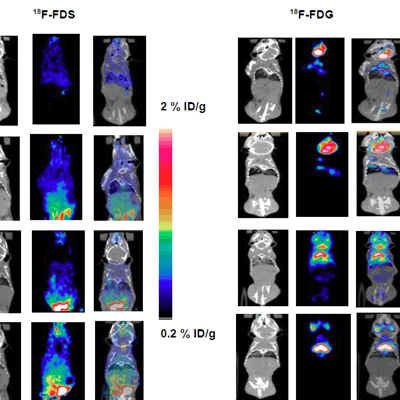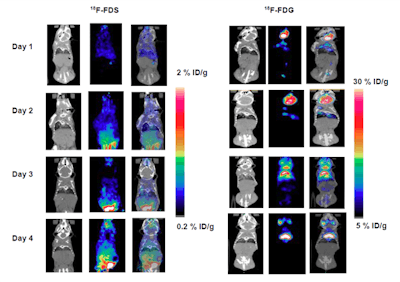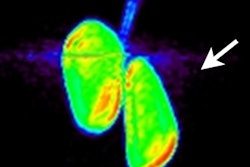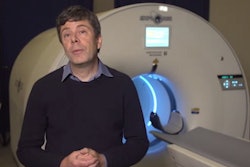
Researchers at the University of Louisville are reporting early progress on a radiotracer that could advance the identification and monitoring of bacterial infection in the lungs, according to a preclinical study in the January issue of the Journal of Nuclear Medicine.
In the study in mice, the radiopharmaceutical F-18 fluorodeoxysorbitol (FDS) was able to differentiate bacterial infection from inflammation. That ability is an advantage over FDG, which cannot distinguish infections from other pathologies such as cancer and inflammation.
Currently, bacterial infections can be diagnosed only after they have become systemic or have caused significant anatomical tissue damage, a "stage at which they are challenging to treat owing to the high bacterial burden," said study co-author Chin Ng, PhD, in a statement (JNM, Vol. 59:1, pp. 134-139).
 Representative PET/CT images using the radiopharmaceuticals FDS and FDG in inflamed mice. CT images show clear inflammation on days 2 and 3 after inoculation, with corresponding high FDG uptake on PET. No significant uptake of FDS was detected for any of the four days. Images courtesy of University of Louisville School of Medicine.
Representative PET/CT images using the radiopharmaceuticals FDS and FDG in inflamed mice. CT images show clear inflammation on days 2 and 3 after inoculation, with corresponding high FDG uptake on PET. No significant uptake of FDS was detected for any of the four days. Images courtesy of University of Louisville School of Medicine.In this study, the researchers injected mice with live bacteria to induce a lung infection or a dead form of the same bacteria to produce inflammation.
Half of the mice with live bacteria were imaged with PET/CT using either FDS or FDG on four consecutive days to monitor disease progression. The other half were screened by bioluminescent imaging, and mice with visible infection underwent follow-up FDS-PET/CT scans. In the inflammation group, half of the mice had FDS-PET/CT and half were scanned using FDG on four consecutive days.
In a comparison between the two radiotracers, only FDS was able to differentiate lung infection from lung inflammation.
FDS can be produced from FDG with one extra conversion step, Ng said, adding that the tracer would be inexpensive and readily available if it were approved by the U.S. Food and Drug Administration (FDA).




















